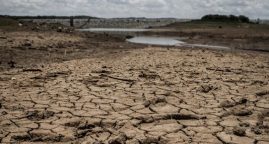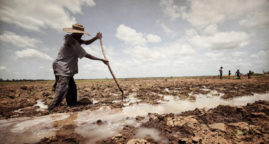Agriculture pays the highest price to disasters, according to a new FAO report
O3/19/2015. In 2010, 800,000 hectares of standing crops were swept away by floods in Sindh (Pakistan).
The Third United Nations World Conference on Disaster Risk Reduction resulted in an international strategy oriented toward prevention and better resilience to natural disasters.
According to the Global Assessment Report of the International Strategy UN Disaster Reduction for 2015, average annual disaster losses are estimated at about 314 billion dollars. The Conference was also marked by a message of considerable importance on the part of FAO. Nearly a quarter of the damage caused by natural disasters in the developing world are borne by the agricultural sector according to preliminary results of a new FAO study.
Read the article (in french) on the United Nation website
Related Articles
A climate in crisis
04/27/2017. How climate change is making drought and humanitarian disaster worse in East Africa.
Seven things you need to know about climate change and conflict
Article published on ICRC website on 07/09/2020 A new ICRC report, When rain turns to dust, explores how countries enduring
Water Scarcity Could Hit Economic Growth Says World Bank
05/03/2016. Water scarcity, exacerbated by climate change, could cost some regions up to 6 percent of their GDP, spur migration, and spark conflict.






